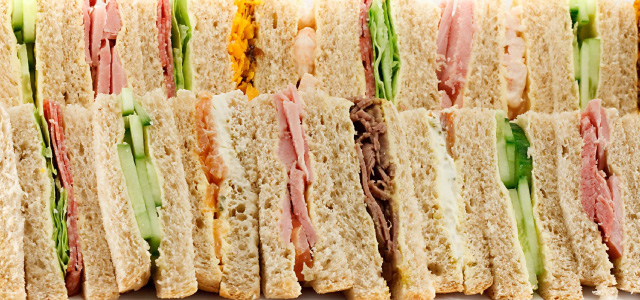The Mid-Ride Feast-and-Bonk: Don’t Let it Happen to You!

If you’re training for hours, whether long distance running, cycling, hiking, or another sport, there’s one fueling mistake you should be keenly aware of, and try to avoid: the mid-ride feast-and-bonk.
Usually, the scenario goes something like this (this was sent to me by a potential client): This past weekend I did a road century and had a bonk experience. I got behind with eating on the bike, and I was starving by the time we stopped at the half-way point. I overdid the lunch with foods at a buffet restaurant all at once. I figured my body needed quite a bit of fuel at that point to replenish and get me through the ride. Not the best options there, mostly heavy foods. There were 52 miles to go. At mile 90 I lost energy and went from 16-18 mph to about 12-14. I felt like I had enough calories to get me there, but apparently not. Do you think this was from not refueling every hour, or did I just not fuel enough period?
My answer: Likely both were the issue.
To start, eating a lot at once is very different than eating small amounts throughout the ride, physiologically. First, when you don’t eat enough hour by hour, but wait and try to replenish, every hour before the feast will have been ridden with sub-optimal fueling. You will create a deficit that you will likely not be able to overcome. Although you can eat a lot of food at once (at a buffet), it still is not likely to give your body the 300-400 calories per hour you need for this sort of ride. When fueling a long ride, you want to proactively give your body the fuel it needs for the next hour, not replenish for hours past.
Next, when you eat a lot, your body has work to digest it. This means it must divert more blood, energy, and oxygen to your gut; and less to your legs and other muscles. You may not have felt it this time, but this is often why athletes feel like they are dragging immediately after eating too much. Usually, it feels like all the power has been taken from your legs.
Once the food has become usable energy in your bloodstream (blood sugar), some will be used immediately, but your body cannot possibly use all of the feast at once. There’s a limit to how much your body can absorb, metabolize, and use per hour, especially when working hard to turn the pedals. Much of the nutrients from the feast will be stored because your body can’t use them right away. A rise in blood sugar can lead to a rise in insulin (the hormone responsible for shuttling sugar from the blood into the cells). Unfortunately, after insulin rushes in to save the day and ideal with too-much-blood-sugar-at-once, you’ll usually experience a low blood sugar. If you’re not fueling hour by hour with efficient fuel by this point, you’ll feel a complete lack of energy, or a “wall.”
The Solution:
Your ride does not have to feel like this. Fueling consistently through a ride, run, or hike, with efficient foods and drinks in small amounts creates a more constant flow of energy and more stable blood sugars. This is also why it’s not a good idea to save all your fuel for the half-way point or the summit of the climb or ride, and then eat a bunch at once.
Quite simply, it’s not about total calories at one time, or over the entire ride. It’s about the amount of carbs and fuel your body is able to use per hour; if not used, they are stored and more insulin will be needed. This amount is generally believed to be 60-90 grams of carbs per hour, and I recommend the full 90 grams of carbs per hour on rides over 3 hours. You can also use “quick-acting” protein like whey powder and quick-fats like the Medium Chain Triglycerides from coconut oil efficiently for extra calories.
In addition, if you’re out for more than 4 or 5 hours, you can add other sources of slower carbs, protein, and fat in small amounts throughout the ride. You’ll have the time needed to digest them, and a small portion of “real food” every 3 hours or so can add nutrients and motivation. A small portion is something the size of half a sandwich. However, over-loading at once sets you up for nothing but problems: risk of stomach cramps, dead legs, and low blood sugar to follow.
The real foods options can range from mashed sweet potatoes, small rice burritos or rice balls, half sandwiches, cheese and crackers, bananas and peanut butter, and more. These options provide an opportunity to eat something savory or salty during a ride, which can be a welcome flavor after hours of sweeter drinks and fuels. They will help you add more calories and avoid that nagging hollow-stomach feeling. I recommend seeing these calories as icing on the cake, above and beyond your normal hourly nutrition needs.
And what about our buffet cyclist? Next time, I recommended that he aim for hourly nutrients, as outlined here. Then, add a small amount of real food every three hours, avoid the buffets, and most of all, avoid the old mid-ride feast-and-bonk!